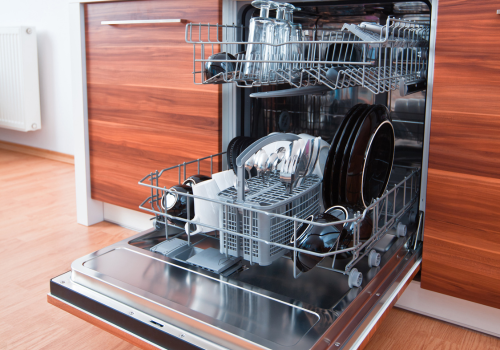Dishwashers are a staple in most homes, providing an easy way to keep dishes clean. However, like any appliance, dishwashers can occasionally break down or stop working properly. If your dishwasher needs repairs, understanding common problems with Dishlex dishwasher repairs can help you quickly resolve issues and get your appliance functioning again.
Dishlex is a popular brand of dishwasher that is known for reliability, but even reliable brands develop problems that require repairs. If your Dishlex dishwasher isn’t cleaning dishes properly or is showing error codes, there are ways you can troubleshoot and fix many issues yourself.

Common Problems and Errors With Dishlex Dishwashers
The most common problems with Dishlex dishwashers include:
- Not cleaning dishes properly
- Leaking water
- Strange noises
- Error or fault codes
If your Dishlex dishwasher isn’t cleaning dishes properly, the first thing to check is the spray arms. Over time, debris can build up and block the spray arms, preventing them from spinning and distributing water effectively. Remove the arms and clean them thoroughly.
Another reason dishes aren’t getting clean is because the water jets on the spray arms may be clogged. Use a thumbtack or fine wire to gently unclog the jets. You should also check the filter at the bottom of the tub and clean or replace it if needed.
Water pooling at the bottom of your Dishlex dishwasher indicates a leak. Leaks usually occur through cracked hoses, failed door gaskets, or a problem with the water inlet valve. Inspect all hoses and seals for cracks. Replace any worn or damaged rubber door gaskets. If those components look fine, the inlet valve may need to be replaced.
Strange noises like grinding, knocking or squealing could signal a failing motor, broken spray arm, blocked impeller or a loose item in the machine. Remove any foreign objects in the tub. Replace the motor or spray arms if they are damaged. Lubricate an impeller to stop squealing.
How to Reset a Dishlex Dishwasher
Dishlex dishwashers have built in diagnostic systems that display fault or error codes to help troubleshoot problems. Common error codes include E1, which indicates a problem with water heating, and E3, which signals an issue with water drainage.
To reset a Dishlex dishwasher after getting an error code:
1. Press the Power button to turn off the dishwasher.
2. Turn off power to the dishwasher at the circuit breaker.
3. Wait 30 seconds then restore power.
4. Press and hold the Start/Reset button for 5 seconds. This resets the control panel.
5. Press Power and run a test cycle. If the error persists, call a technician.
Request a Free Quote
Maintaining Your Dishlex Dishwasher
With periodic maintenance, your Dishlex dishwasher should provide years of reliable service. Here are some tips for keeping your machine running efficiently:
1 – Clean the filter monthly – Food and debris trapped in the filter can clog wash arms. Rinse it off each month.
2 – Use dishwasher cleaner – Run an empty cycle monthly with dishwasher cleaner to remove grease and limescale.
3 – Clean spray arms – Check spray arms for blocked jets several times per year. Remove and clean the arms as needed.
4 – Inspect the door gasket – Replace cracked or worn gaskets to prevent leaking. Lubricate gaskets with silicone spray to maintain flexibility.
5 – Flush the water line – Mineral deposits in hard water can clog the water line. Disconnect the line from the valve annually and flush it.
6 – Clean door edges – Use a non-abrasive sponge and hot, soapy water to remove grime buildup along the door bottom and edges.
How Melbourne Dishwasher Repairs Can Help You
With regular care and maintenance, Dishlex dishwashers can provide over a decade of use. But when problems do arise, understanding common issues like cleaning problems, leaks and error codes can help you quickly get the appliance back up and running. Maintaining the dishwasher properly also prevents breakdowns. Call Melbourne Dishwasher repairs for complex Dishlex dishwasher repairs, but many problems can be fixed affordably with basic troubleshooting and DIY maintenance.
